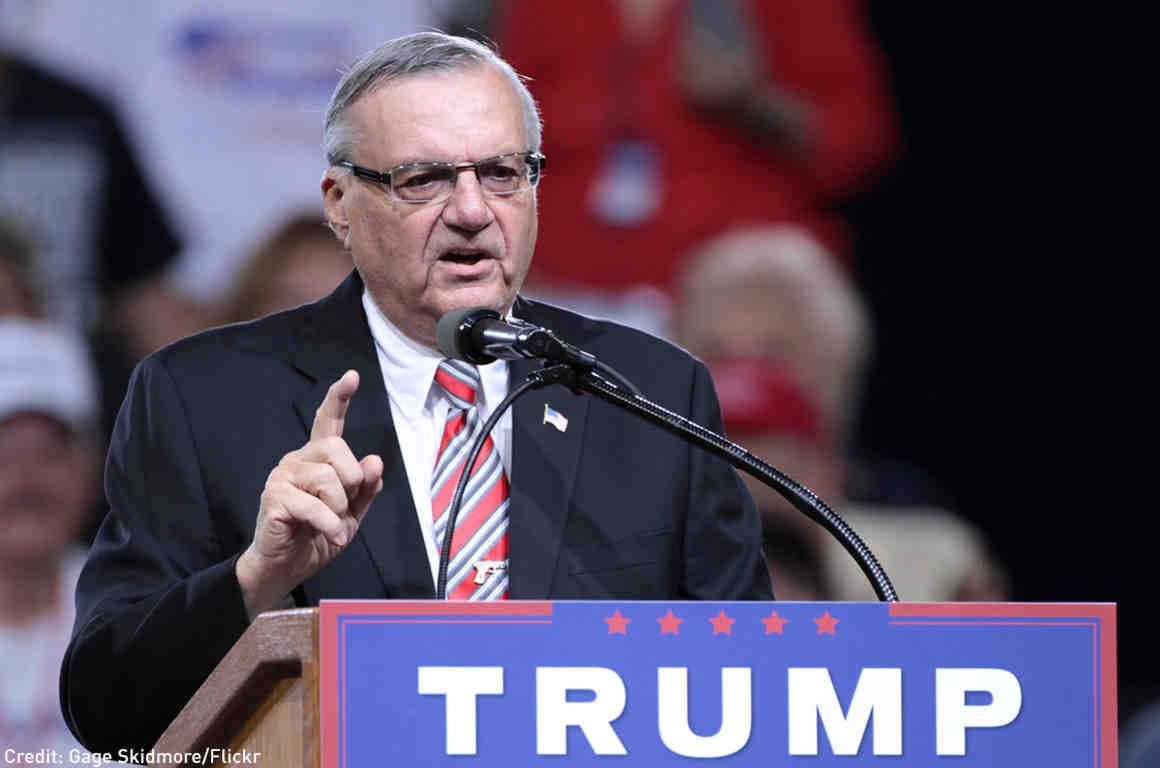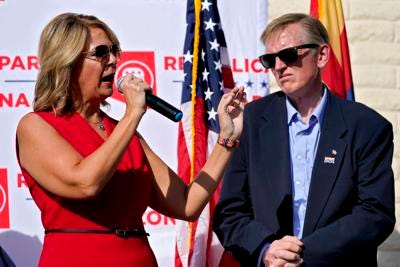Dear Reader,
I would like to thank you for your patience, considering the long period between the last article and this one. My schoolwork and associated obligations took priority, and I was unable to keep up the pace I would have preferred. Hope to get back to normal programming shortly. For now, here is the latest installment of my American Political Atlas series, this one on Arizona.
Yours Truly,
Parakram K.
Overview
Arizona, a crucial southern border state, has become one of the most competitive electoral battlegrounds in recent years. The Cook Partisan Voting Index (PVI) measures how much a state votes to the right or left of the national average; Arizona’s Cook PVI is currently Republican +3. However, Joe Biden carried the state in 2020, marking the first time Arizona had voted for a Democrat in a 21st century presidential race. Republicans hold most positions at the state-government level, with a notable exception being the office of secretary of state. However, Democrats currently hold both of Arizona’s seats in the U.S. Senate and a majority of the state’s seats in the House of Representatives. The average statewide result is below.
History
When Arizona was admitted to the Union as a state in 1912, it leaned Democratic at both the federal and state level. This can be seen through the lopsided control Democrats held on statewide offices between admission to the union and the 1950s, as well as the fact that Democrats controlled the Arizona State House from 1912 to 1965 without interruption. This was probably due to the powerful Populist influence in the Democratic Party of that time that forced the party platform to include issues like low tariffs and progressive laws surrounding farming, land usage, and water reform. Furthermore, the New Deal helped solidify Democratic control, as it channeled federal dollars into Arizona's economy and infrastructure. However, the 1950s brought change, with the GOP championing the interstate highway system and the defense industry (which played a large role in the development of the state), and, suddenly it was the Republicans who were bringing in resources to Arizona. Since 1952, Arizona has only voted for the Democratic nominee for president twice (1996 and 2020).
The other significant historical note in Arizona that must be mentioned are the two “great men” who have shaped the politics of the state: Barry Goldwater and John McCain. Goldwater, famous for losing in a landslide to Lyndon B. Johnson in 1964, is arguably the father of modern conservatism: a focus on limiting the power of government in a way that appealed to social conservatives and free-marketers. This muscular conservatism ensured GOP dominance in Arizona and was also adopted widely by the GOP to great success nationally through leaders like Ronald Reagan. In contrast, McCain later represented the slow transformation of this conservatism into “maverick”-style moderation. A hero to many Arizonans across the political spectrum, McCain arguably moved the state away from its strict Goldwater brand of conservatism and back to the center.
Communities and Voting Blocs
Arizona has an idiosyncrasy not found in many non-western states in the US: most of its population is clustered in one county. Specifically, around 62% of Arizonans reside in Maricopa County, which is anchored around the city of Phoenix. Maricopa County prominently features three major voting blocs in the state: Young Progressives, Urban Hispanics, and Suburban Whites.
Young Progressives
Young Progressives are the most left-leaning of the three. A product of Arizona’s recent tech boom, they bring a Silicon-Valley-style liberalism to the state. They form the core of much of the state Democratic Party infrastructure. From a Democratic perspective, the main challenge this group presents is turnout; college students and young professionals, while active in the political process, have lower rates of voting and turnout on Election Day. In 2018, Krysten Sinema was able to channel their disapproval of President Trump and their hope for a senator who actually represented their lifestyle and perspective, to beat Martha McSally and flip Jeff Flake’s old seat. However, now Sinema is probably the Democrat who is most unpopular with this group, due to her strong fiscal conservatism and desire for bipartisan moderation.
Urban Hispanics
Urban Hispanics, as a group, are socially moderate, culturally conservative, economically liberal, politically well organized, and Democratic-aligned. In the aftermath of SB 1070, a strict anti-illegal immigration Arizona law from 2010 that critics (like the aforementioned Kyrsten Sinema) worried would encourage racial profiling, many urban Hispanic organizers created several liberal political groups aimed their own community. Ten years later, these same organizations helped deliver the state to Joe Biden, through a very impressive get-out-the-vote campaign in their community. Similar to Young Progressives, election day turnout remains a challenge with Urban Hispanics. Furthermore, while not as socially conservative as their rural counterparts, these voters are typically not motivated by liberal stances on social issues alone.
Suburban Whites
The final group in Maricopa County are the residents of the numerous suburban communities. While holding sizable minority (mostly liberal Asian) populations, these communities are predominantly white and moderately conservative, especially in the traditional sense of trying to preserve the status quo. I would surmise that, in their view, the status quo is a moderate-to-conservative outlook on all issues, with an acceptance of slow progressive change to society. Any attempt to either hyper-accelerate this change, or seemingly turn the clock backwards, doesn’t seem to go down well. A prime example is related to the issue of illegal immigration. From 1993 to 2017, Joe Arpaio, one of the biggest GOP immigration hawks, served as the elected sheriff of Maricopa County. In each election, he won by a lesser margin than the earlier one, until his eventual electoral demise in 2016. Concurrently, Trump’s strong line against illegal immigration did not appeal to these voters; suburbanites had moved gradually leftwards on immigration from 1993 to 2016. This trend can be seen on other issues as well, and the prior paradigm shift on immigration displays the gradual progressivism that has allowed the Democrats to gain a foothold in a previously deeply-Republican area.
Democratic groups outside Maricopa County
Outside Maricopa County and the city of Tucson, which also has all three of the aforementioned groups, there are a couple of other communities. Rural Hispanics can mostly be seen in Arizona’s south near the border with Mexico. They are more conservative than their urban counterparts, and crucially, probably more open to voting Republican thereby jettisoning their longtime Democratic alignment. While in 2020 this group did not swing as much as their counterparts in New Mexico and Texas, there was still a substantial trend towards Trump. Another group in Arizona’s rural areas are the Native communities across the states like the Navajo, Hopi, and Tohono O'odham. Being economically challenged, Native communities are fiscally progressive, yet are socially conservative and extremely tough on drug legalization when it comes to the ballot box. While they typically vote Democratic, they can be safely expected to vote against drug legalization and decriminalization referendums and can be circumspect about Democrats who make relaxing drug laws a central campaign issue.
Rural Whites
Finally, the numerous rural and exurban white communities form the backbone of the Arizona Republican party. These communities are among the most conservative in the nation. Their main congressman is Paul Gosar (R-Arizona), who has come under scandal over his ties to white nationalists and far-right organizations, as well as his extreme positions on certain issues like immigration. Another notable member who represents this bloc is Kelli Ward: the current chair of the Arizona GOP, a former state senator from a rural district, and a strong proponent of the unsubstantiated theory that the 2020 election was stolen from Donald Trump through massive, organized voter fraud. Like Gosar, she also has come under fire for her association with far-right and anti-vaccine individuals. While the rural White bloc used to occupy the backseat of the Arizona GOP, they now are the ones running the party. The take-over of the Arizona GOP by this bloc is what has driven many of the white suburbanites away from the party.
Future
With evolving issues that center on suburban quality of life, such as gas prices and grocery-store price inflation, it's hard to predict the trajectory of the state in the near future. If rising prices are still a major issue in 2022, Democrats may face a tough time on election night. However, the long-term trends are not good for the GOP. The conservative fabric that kept both the suburbanites and rural Whites together has begun to seriously fray, and neither group seems to be able to work with each other. With no disagreement of that magnitude on the Democratic side, it seems that the blue party has a better chance of keeping their front united for now, especially as more moderate Republicans (Doug Ducey, Mark Brnovich) face a large amount of hostility from their right. In the future, expect a more right-wing state Republican Party focused on culture war issues, and a less-progressive state Democratic Party, though the progressive standard may still be borne by the county-level operatives.
Name to Watch: Ruben Gallego
One key politician to look out for is the current Democrat representing central Phoenix in the House of Representatives: Ruben Gallego. A veteran who served in Iraq in the mid-2000s, he has served in both the state and federal legislatures. While staunchly liberal, he has not been afraid to voice his controversial (in progressive circles) opinions on the relationship between the Democratic Party and the Latino community, specifically critiquing the condescending rhetoric and language many left-leaning activists use towards Latinos. As someone who is acutely familiar with the Latino community and the Phoenix metro area, he could pose a strong threat to Republicans, and even fellow Democrats like Kyrsten Sinema in a primary challenge. Such a primary challenge would be interesting given Sinema’s relative unpopularity with Democrats and relative popularity with Republicans. If Gallego wins a primary challenge, Sinema may still try to run a “Connecticut for Lieberman” style campaign to keep her seat as an independent, but this would be much harder for her in Arizona given the GOP baseline is far higher (due to the aforementioned rural Whites). Considering Gallego’s recent assertiveness with Russia, it is clear that he can expand his purview to international issues. Given his strong liberal credentials, strong sense of pragmatism, and vast experience in many diverse issues, he could be a politician from Arizona to watch in the near future.











